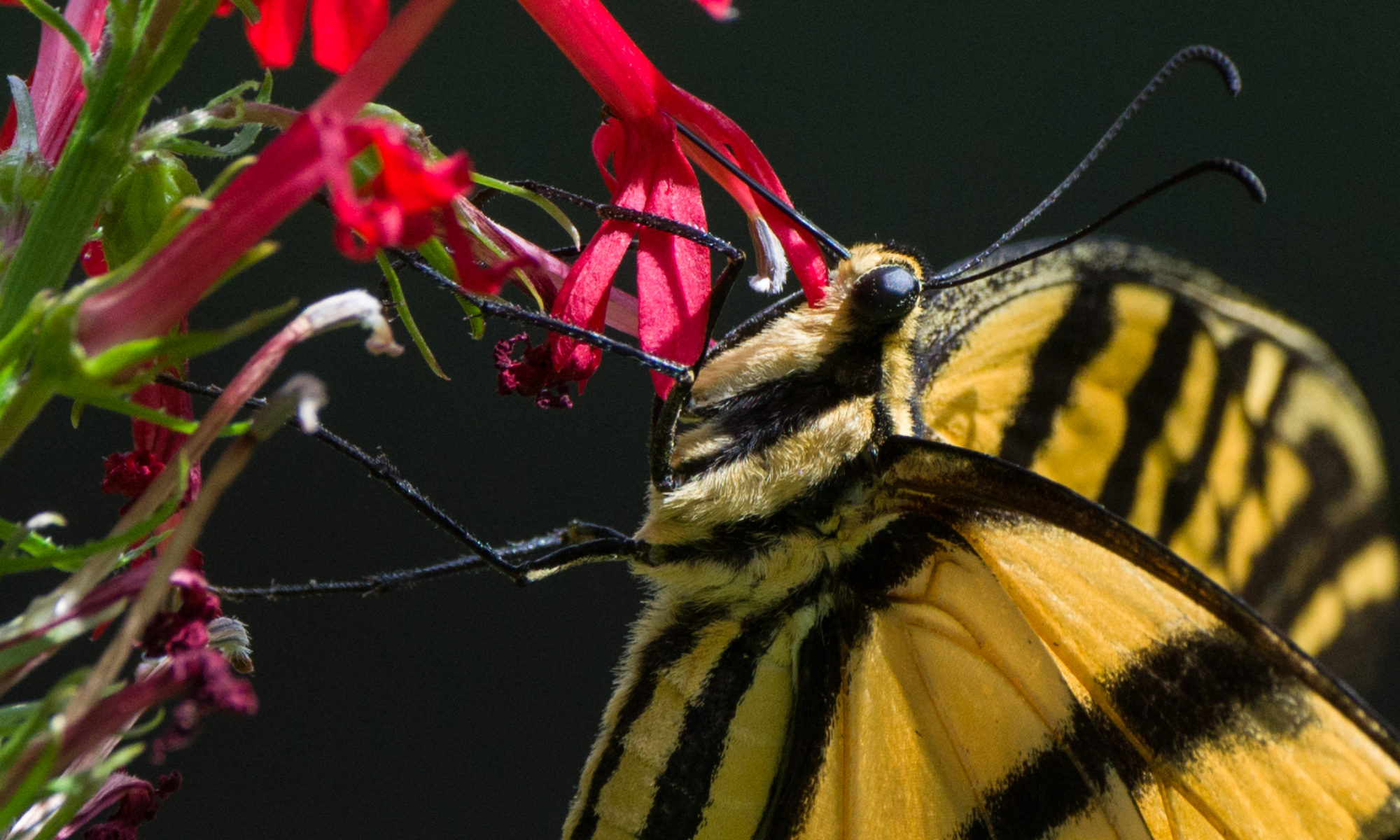* Laboratory members
- Kozela, C.* and M.O. Johnston. 2020. Effect of salt stress on mutation and genetic architecture for fitness components in Saccharomyces cerevisiae. G3 Genes|Genomes|Genetics 10 (10), 1 October 2020, Pages 3831–3842,
- Panchen, Z.A*., J. Doubt, H.M. Kharouba, and M.O. Johnston. 2019. Patterns and biases in Arctic herbarium specimen collection: implications for phenological research. Applications in Plant Sciences 7(3): e1229 (Invited special article,
- Panchen, Z.A.* and M.O. Johnston. 2018. Shifts in pollen release envelope differ between genera with non- uniform climate change. American Journal of Botany 105: 1568–1576. [PDF] [Cover]
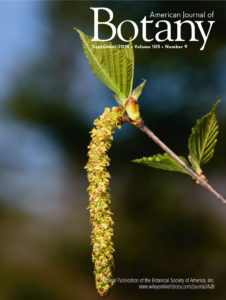
- Johnston, M.O. and M.P. Bartkowska*. 2017. Individual pollen limitation, phylogeny and selection. New Phytologist 214: 909–912. [PDF]
- Moeller, D.A., R.D. Briscoe Runquist, M.A. Geber, C. Goodwillie, A.M. Moe, P-O. Cheptou, C.G. Eckert, E. Elle, M.O. Johnston, S. Kalisz, J.K. Kelly, E. Porcher, R.H. Ree, R.D. Sargent, M. Vallejo-Marín, and A.A. Winn. 2017. Global biogeography of mating system variation in seed plants. Ecology Letters 20: 375–384 (doi: 10.1111/ele.12738). [PDF]
- McElroy, M.S.*, Y.A. Papadopoulos, K. Glover, Z. Dong, S.A.E. Filmore and M.O. Johnston. 2016. Interactions between cultivars of legume species (Trifolium pratense L., Medicago sativa L.) and grasses (Phleum pratense L., Lolium perenne L.) under different nitrogen levels. Canadian Journal of Plant Science 97: 214–225. (doi:10.1139/CJPS-2016-0130). [PDF]
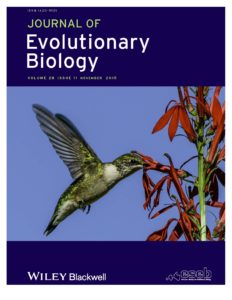
- Bartkowska, M.P.*, and M.O. Johnston. 2015. Pollen limitation and its influence on natural selection through seed set. Journal of Evolutionary Biology 28: 2097–2105 (and cover photograph). [PDF] [Cover]
- Bartkowska, M.P.*, and M.O. Johnston. 2014. The sexual neighborhood through time: competition and facilitation for pollination in Lobelia cardinalis(Lobeliaceae). Ecology 95: 910–919 (doi: 10.1890/13-0447.1). [PDF]
- Bartkowska, M.P*., and M.O. Johnston. 2012. Pollinators cause stronger selection than herbivores on floral traits in Lobelia cardinalis (Lobeliaceae). New Phytologist 193: 1039–1048. (doi: 10.1111/j.1469-8137.2011.04013.x) [PDF]
- Winn, A.A., E. Elle, S. Kalisz, P.-O. Cheptou, C.G. Eckert, C. Goodwillie, M.O. Johnston, D.A. Moeller, R.H. Ree, R.D. Sargent and M. Vallejo-Marin and A.A. . 2011. Analysis of inbreeding depression in mixed-mating plants provides evidence for selective interference and stable mixed mating. Evolution 65: 3339–3359. (doi:10.1111/j.1558-5646.2011.01462.x) [PDF]
- Li, P.* and M.O. Johnston. 2010. Flower development and the evolution of self-fertilization in Amsinckia: the role of heterochrony. Evolutionary Biology 37: 143–168. [PDF]
- Goodwillie, C., R.D. Sargent, D.A. Moeller, R.H. Ree, M.O. Johnston, E. Porcher, P.-O. Cheptou, C.G. Eckert, E. Elle, M.A. Geber, S. Kalisz, J.K. Kelly, M. Vallejo-Marin and A.A. Winn. 2010. Correlated evolution of mating system and floral display traits in flowering plants and its implications for the distribution of mating system variation. New Phytologist 185: 311–321. [PDF]
- Eckert, C.G., S. Kalisz, M.A. Geber, R. Sargent, E. Elle, P.-O. Cheptou, C. Goodwillie, M.O. Johnston, J.K. Kelly, D.A. Moeller, E. Porcher, R.H. Ree, M. Vallejo-Marin and A.A. Winn. 2010. Plant mating systems in a changing world. Trends in Ecology and Evolution 25: 35–43.[PDF]
- Whittle, C.-A.*, S.P. Otto, M.O. Johnston and J.E. Krochko. 2009. Adaptive epigenetic memory of ancestral temperature regime in Arabidopsis thaliana. Botany 87: 650–657. [PDF]
- Burd, M., T.-L. Ashman, D.R. Campbell, M.R. Dudash, M.O. Johnston, T.M. Knight, S.J. Mazer, R.J. Mitchell, J.A. Steets and J.C. Vamosi. 2009. Ovule number per flower in a world of unpredictable pollination. American Journal of Botany 96: 1159–1167. [PDF]
- Bartkowska, M.P.*, and M.O. Johnston. 2009. Quantitative genetic variation in populations of Amsinckia spectabilis that differ in rate of self-fertilization. Evolution 63: 1103–1117. [Abs] [PDF]
- Porcher, E., J.K. Kelly, P.-O. Cheptou, C.G. Eckert, M.O. Johnston and S. Kalisz. 2009. The genetic consequences of fluctuating inbreeding depression and the evolution of plant selfing rates. Journal of Evolutionary Biology 22: 708–717. [PDF]
- Johnston, M.O., E. Porcher, P-O. Cheptou, C.G. Eckert, E. Elle, M.A. Geber, S. Kalisz, J.K. Kelly, D.A. Moeller, M. Vallejo-Marín and A.A. Winn. 2009. Correlations among fertility components can maintain mixed mating in plants. American Naturalist 173:1–11. [Abs] [PDF]
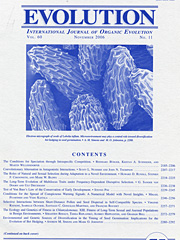
- Simons, A.M.*, and M.O. Johnston. 2006. Environmental and genetic sources of diversification in the timing of seed germination: implications for the evolution of bet hedging. Evolution 60:2280–2292 (and cover). [PDF] [Cover]
- Hill, N.M., M.T.D. Myra, and M.O. Johnston. 2006. Breeding system and early-stage inbreeding depression in a Nova Scotian population of the global rarity, Sabatia kennedyana (Gentianaceae). Rhodora 108: 307–328.
- Whittle, C.-A.*, and M.O. Johnston. 2006. Moving forward in determining the causes of mutations: the features of plants that make them suited to assessing the impact of environmental factors and cell age. Journal of Experimental Botany 57: 1847–1855). [PDF]
- Knight, T.M., J.A. Steets, J.C. Vamosi, S.J. Mazer, M.Burd, D.R. Campbell, M.R. Dudash, M. O. Johnston, R.J. Mitchell and T.-L. Ashman. 2005. Pollen limitation of plant reproduction: pattern and process. Annual Review of Ecology, Evolution and Systematics 36: 467–497. [PDF] [Abs]
- Ashman, T.-L., T.M. Knight, J.A. Steets, P. Amarasekare, M. Burd, D.R. Campbell, M.R. Dudash, M.O. Johnston, S.J. Mazer, R.J. Mitchell, M.T. Morgan, and W.G. Wilson. 2004. Pollen limitation of plant reproduction: ecological and evolutionary causes and consequences. Ecology 85: 2408–2421. [PDF] [Abs]
- Whittle, C.-A.*, and M.O. Johnston. 2003. Male-biased transmission of deleterious mutations to the progeny in A. thaliana. Proceedings of the National Academy of Sciences USA 100: 4055–4059. [PDF] [Abs]
- Whittle, C.-A.*, and M.O. Johnston. 2003. Broad-scale analysis contradicts the theory that generation time affects molecular evolutionary rate in plants. Journal of Molecular Evolution 56: 223–233. [PDF] [Abs]
- Simons, A.M.*, and M.O. Johnston. 2003. Suboptimal timing of reproduction in Lobelia inflata may be a conservative bet-hedging strategy. Journal of Evolutionary Biology 16:233–243. [PDF] [Abs]
- Whittle, C.-A., and M.O. Johnston. 2002. Male-driven evolution of mitochondrial and chloroplastidial DNA sequences in plants. Molecular Biology and Evolution 19: 938–949. [PDF] [Abs]
- Johnston, M.O. 2002. Homeosis. Oxford Encyclopedia of Evolution. Oxford University Press.
- Li, P., and M.O. Johnston. 2001. Comparative floral morphometrics of distyly and homostyly in three evolutionary lineages on Amsinckia (Boraginaceae) Canadian Journal of Botany 79: 1332–1348. [PDF]
- Whittle, C.-A., T. Beardmore and M.O. Johnston. 2001. Is G1 arrest in plant seeds induced by a p53-related pathway? Trends in Plant Science 6:248–251. [PDF]
- Simons, A.M., and M.O. Johnston. 2000. Plasticity and the genetics of reproductive behaviour in the monocarpic perennial, Lobelia inflata (Indian tobacco). Heredity 85:356–365. [PDF]
- Li, P., and M.O. Johnston. 2000. Heterochrony in plant evolutionary studies through the twentieth century. Botanical Review 66: 57–88. [PDF]

- Simons, A.M., and M.O. Johnston. 2000. Variation in seed traits of Lobelia inflata (Campanulaceae): Sources and fitness consequences. American Journal of Botany 87: 124–132 (and cover photo). [PDF] [Cover]
- Johnston, M.O. 2000 (updated 2004). Mutation and new variation: overview. Encyclopedia of Life Sciences. Macmillan Publishing, London, UK [published on the internet (http://www.grovereference.com/els/) and on paper].
- Simons, A.M., and M.O. Johnston 1999. The cos
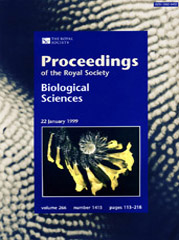 t of compensation. American Naturalist 153: 683–687. [PDF]
t of compensation. American Naturalist 153: 683–687. [PDF]
- Li, P., and M.O. Johnston. 1999. Evolution of meiosis timing during floral development. Proceedings of the Royal Society B: Biological Sciences266: 185–190 (and cover photo). [PDF] [Abs] [More Info] [Cover]
- Johnston, M.O. 1998. Evolution of intermediate selfing rates in plants: Pollination ecology versus deleterious mutations. Genetica 102/103: 267–278 (special issue, “Mutation and Evolution.” Published in book form as well by Kluwer Press). [PDF] [Abs]
- O’Connell, L.M., and M.O. Johnston. 1998. Male and female pollination success in a deceptive orchid, a selection study. Ecology 79: 1246–1260. [PDF]
- Johnston, M.O., B. Das, and W.R. Hoeh. 1998. Negative correlation between male allocation and self-fertilization in a hermaphroditic animal. Proceedings of the National Academy of Sciences USA 95: 617–620. [PDF] [Abs]
- Simons, A.M., and M.O. Johnston. 1997. Developmental instability as a bet-hedging strategy. Oikos 80: 401–406. [PDF]
- Schoen, D. J., M.O. Johnston, A. -M. L’Heureux and J. M. Marsolais. 1997. Evolutionary history of the mating system in Amsinckia (Boraginaceae). Evolution 51: 1090–1099. [PDF]
- Johnston, M.O., and D.J. Schoen. 1996. Correlated evolution of self-fertilization and inbreeding depression: An experimental study of nine populations of Amsinckia (Boraginaceae). Evolution 50: 1478–1491. [PDF]
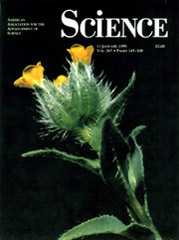 Johnston, M.O., and D.J. Schoen. 1995. Mutation rates and dominance levels of genes affecting total fitness in two angiosperm species. Science 267: 226–229 (and cover photo). [PDF] [Abs] [Cover]
Johnston, M.O., and D.J. Schoen. 1995. Mutation rates and dominance levels of genes affecting total fitness in two angiosperm species. Science 267: 226–229 (and cover photo). [PDF] [Abs] [Cover]
- Johnston, M.O., and D.J. Schoen. 1994. On the measurement of inbreeding depression Evolution 48: 1735–1741. [PDF]
- Johnston, M.O. 1993. Tests of two hypotheses concerning pollen competition in a self-compatible, long-styled species (Lobelia cardinalis: Lobeliaceae). American Journal of Botany 80: 1400–1406. [PDF]
- Johnston, M.O. 1992. Effects of cross and self-fertilization on progeny fitness in Lobelia cardinalis and L. siphilitica. Evolution 46: 688–702. [PDF]
- Johnston, M.O. 1991. Natural selection on floral traits in two species of Lobeliawith different pollinators. Evolution 45: 1468–1479. [PDF]
- Johnston, M.O. 1991. Pollen limitation of female reproduction in Lobelia cardinalis and L. siphilitica. Ecology 72: 1500–1503. [PDF]
